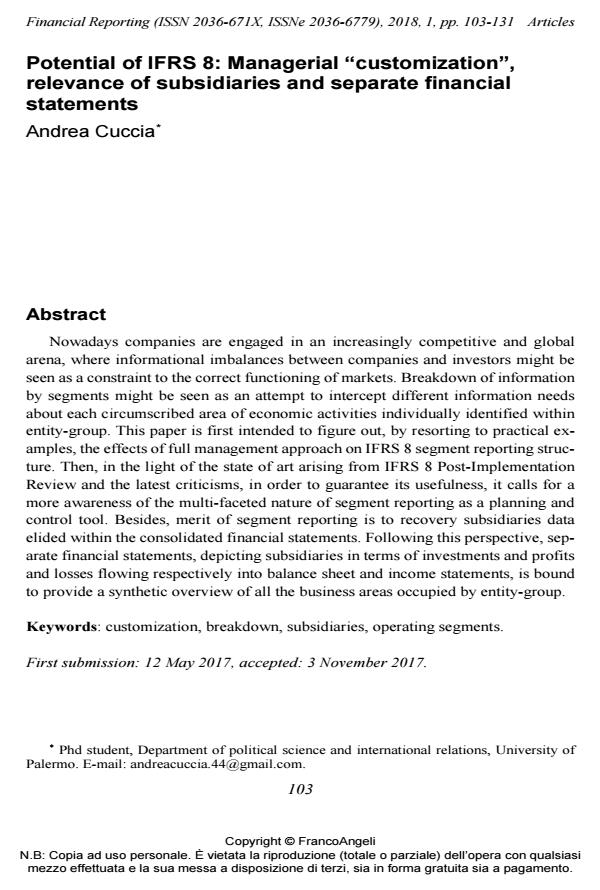Potential of IFRS 8: Managerial "customization", relevance of subsidiaries and separate financial statements
Journal title FINANCIAL REPORTING
Author/s Andrea Cuccia
Publishing Year 2018 Issue 2018/1
Language English Pages 29 P. 103-131 File size 354 KB
DOI 10.3280/FR2018-001004
DOI is like a bar code for intellectual property: to have more infomation
click here
Below, you can see the article first page
If you want to buy this article in PDF format, you can do it, following the instructions to buy download credits

FrancoAngeli is member of Publishers International Linking Association, Inc (PILA), a not-for-profit association which run the CrossRef service enabling links to and from online scholarly content.
Nowadays companies are engaged in an increasingly competitive and global arena, where informational imbalances between companies and investors might be seen as a constraint to the correct functioning of markets. Breakdown of infor-mation by segments might be seen as an attempt to intercept different information needs about each circumscribed area of economic activities individually identified within entity-group. This paper is first intended to figure out, by resorting to practical examples, the effects of full management approach on IFRS 8 segment reporting structure. Then, in the light of the state of art arising from IFRS 8 Post-Implementation Review and the latest criticisms, in order to guarantee its useful-ness, it calls for a more awareness of the multi-faceted nature of segment reporting as a planning and control tool. Besides, merit of segment reporting is to recovery subsidiaries data elided within the consolidated financial statements. Following this perspective, separate financial statements, depicting subsidiaries in terms of in-vestments and profits and losses flowing respectively into balance sheet and in-come statements, is bound to provide a synthetic overview of all the business areas occupied by entity-group.
Keywords: Customization, breakdown, subsidiaries, operating segments.
Andrea Cuccia, Potential of IFRS 8: Managerial "customization", relevance of subsidiaries and separate financial statements in "FINANCIAL REPORTING" 1/2018, pp 103-131, DOI: 10.3280/FR2018-001004